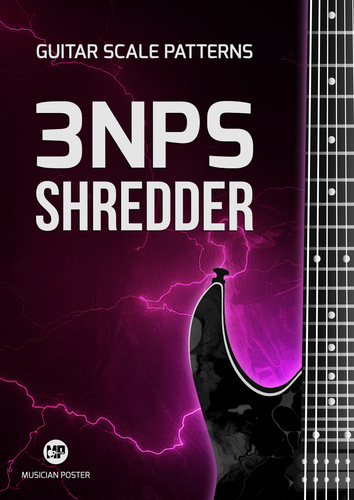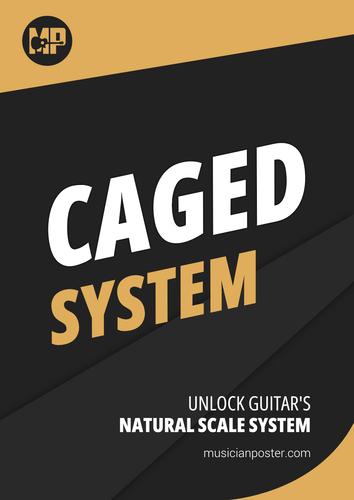Charts to help you visualize how each of the 5 CAGED shapes of C-Major pentatonic scale connects to the next one like a puzzle.
Comes in 2 flavors: 13 frets and 22 frets. 13-fret version highlights the 5 CAGED shapes without repetition and takes as much horizontal space of the page as possible to appear big and bold while the other one features CAGED shapes across the entire fretboard, repeating all 5 patterns almost twice and thus unlocking all shapes' connection points and not just in the first half of the fretboard.
The circles have scale note names. Root tones have a stronger visual emphasis to provide soloing landmarks and a better overview of the shape's primary "anchor points" to help you memorize and internalize all 5 patterns.
Pro tip: the shapes are identical for all Major pentatonic scale roots. For example, to get CAGED shapes for the G-Major pentatonic scale you just need to align the E-shape's (pattern 1) root tone with the 3rd fret of the lowest 6th string (you can also align the G-shape with the 3rd fret of the 6th string, but then you'll have to play the pattern with open strings—not that you have to avoid it, but I'm just saying).
CAGED shapes are always ordered as the CAGED-word is spelled. So for our G-Major pentatonic example the next shape towards the guitar's bridge would be the D-shape (after E), and the previous shape towards the guitar's nut would be the G-shape. The notes will naturally be different though, as opposed to what's shown on the diagrams, e.g. for the E-shape the root tone will be note G; the next note will be A, and so on.
Notice that the C-shape on the 12th fret repeats the C-shape of the 0-fret (i.e. open C-shape built from the nut of the guitar). CAGED is a 5-pattern system—the whole series of patterns repeat every 5 patterns, like a loop, and the second diagram shows that very clearly.
Why is this relevant?
Well, that tells you that you don't need to memorize notes across all 24 frets of the guitar fretboard—you just need to learn what's in the 1st half (12 frets) of the fretboard and the 2nd half mirrors the first one.
Furthermore, it tells you that this half is split into 5 distinct "slices"—not 4, not 8, but 5. So, the idea here is—the fewer patterns, the easier it is to memorize the scale(s) across the entire fretboard. Take your time to observe this for yourself on the full-fretboard version of this chart.















0 Comments